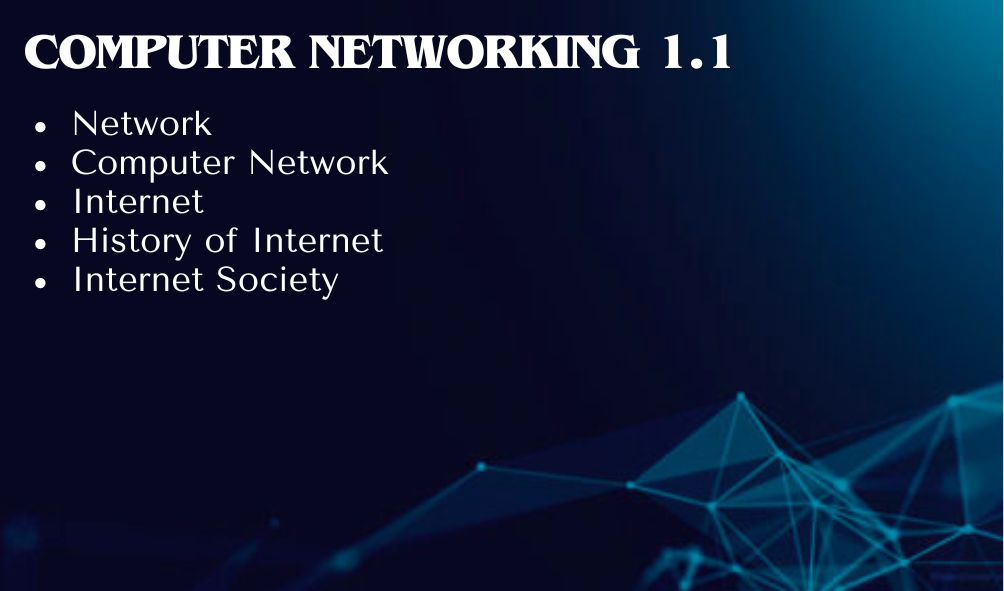A Beginner's Guide to Computer Networks and the History of the Internet
 Radhika khatri
Radhika khatri
If you encounter an unfamiliar term, I've provided explanations at the end. Feel free to comment if you need further clarification on any specific term!!
COMPUTER - Commonly Oriented Machine Particularly Used for Training, Education and Research
What is Network?
Network means connectivity.
What is Computer Network?
Computer networks are systems where multiple computers are interconnected to share resources, exchange information, or communicate with each other.
What is Internet?
In simple terms, Internet is the global network of Computer Networks and other devices that communicate with each other using standardized protocols.
How did the internet start? || History of Internet
ARPANet(1960s and 1970s) -
In the 1960s and 1970s, ARPANET (Advanced Research Projects Agency Network) was introduced.
It was developed by the US Department of Defense's ARPA (Advanced Research Projects Agency).
The purpose of ARPANET was to ensure secure communication between research institutes.
MIT, Stanford, UCLA, and the University of Utah were among the first institutions connected using ARPANET.
Packet Switching (late 1960s - 1970s)-
- In the late 1960s and 1970s, packet switching revolutionized data transmission by breaking data into smaller packets, allowing them to be sent independently over a network.
TCP/IP Protocol (1970s and 1980s) -
- TCP/IP becomes the standard protocol for data transmission on the Internet.
Expansion and Commercialization (1980s and 1990s) -
NSFNET (National Science Foundation Network) becomes a key network, facilitating greater connectivity.
The use of the Internet shifts from primarily academic and military applications to include public and commercial purposes.
World Wide Web (WWW) (1990s - Present)
The World Wide Web (WWW) is defined as an information system where documents and resources are identified by URLs.
Web resources can be interlinked through hyperlinks, allowing easy navigation between them.
Tim Berners-Lee is credited with the development of the WWW, which revolutionized how information is accessed and shared.
The impact of the WWW includes the democratization of information, allowing individuals and organizations to share knowledge widely.
Internet Society
ISOC or Internet society is a global organization, they are responsible for changing or creating the protocols.
Understanding Special Terms in the World of Technology
Protocols
Packet
Hyperlinks
In the next blog, we will be discussing some important networking device!!
Catch you in the next post—until then keep exploring! 🚀
Subscribe to my newsletter
Read articles from Radhika khatri directly inside your inbox. Subscribe to the newsletter, and don't miss out.
Written by

Radhika khatri
Radhika khatri
I'm Radhika Khatri, a passionate software developer with a strong foundation in Java, currently exploring the exciting world of DevOps. I’m driven by the desire to learn, collaborate, and grow within the tech community. As I dive deeper into development and infrastructure, I look forward to sharing insights on Java, DevOps, and my journey into mastering new skills. New to the world of collaboration, I’m excited to connect with like-minded developers and contribute to meaningful discussions.